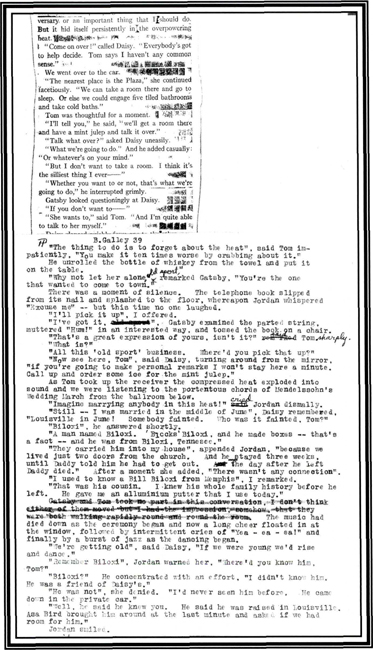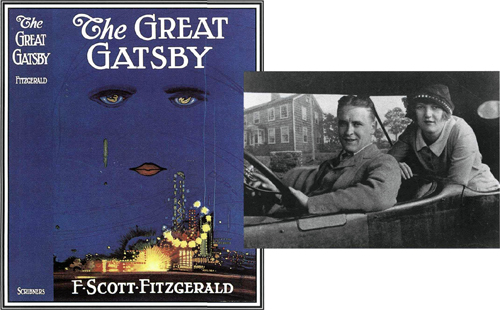

F. Scott Fitzgerald and The Great Gatsby
The Plaza has long been an inspiration for writers, and among the first was novelist F. Scott Fitzgerald, the golden boy of 1920s literature. Fitzgerald and his wife, Zelda, led much-publicized madcap lives and were ardent Plaza patrons, frequenting the Grill Room, the hotel’s least formal basement restaurant. Not long after the Fitzgeralds’ 1920 marriage, the newlyweds moved into an apartment at 38 West Fifty-ninth Street, just doors down from the Grill. During this period, they made nightly appearances there and one evening Fitzgerald frolicked—cold sober—in the Pulitzer Fountain in front of the hotel. Unfortunately, photographs of this notorious misadventure were never made; the portrait of Scott and Zelda (below, right) was taken somewhere in Alabama in the summer of 1920 and was later used to illustrate a magazine piece called “The Cruise of the Rolling Junk.”
Like most novelists, Fitzgerald incorporated his own experiences into his work, and thus The Plaza appeared frequently as a setting in his novels and short stories. The Beautiful and Damned, his second novel, featured scenes set in the Grill Room, and his masterpiece, The Great Gatsby, used the Tearoom and a guest room as backgrounds. (Here, Fitzgerald’s galley proofs for the climactic scene in The Plaza suite in The Great Gatsby; below left, the book’s original dust jacket.)
Fitzgerald’s passion for The Plaza was famously reflected in a letter written to the author by his friend Ernest Hemingway. “If you really feel blue enough, get yourself heavily insured and I’ll see you can get killed,” Hemingway joked, “and I’ll write you a fine obituary … and we can take your liver out and give it to the Princeton Museum, [and] your heart to the Plaza Hotel.”
